News
News / 06/15/2021 / 2450
On 11th June, 2021, Caroline Gilby MW, expert on wines of Central and Eastern Europe had a zoom presentation and tasting of awarded wines / trophy winners at this year's competition for the best Serbian wine organized by the Serbian Association of Winemakers and Vinegrowers.
You can find below the transcript of the presentation and a list of awarded wines.
CAROLINE GILBY MW: "Nice to be here and it's lovely to have an array of lovely Serbian wines to taste and to share with you. So, just a little bit of background: my personal connection with Serbia goes back to the early 1990s, or I should say with the land that is Serbia today. Back then I was working as a buyer for a chain of wine shops and CEE wines were a huge business then. So, I used to buy some red wines from a winery called Navip that some of you will remember under the Milion brand that they used for export. So, that was back in about 1993, I was buying those wines. So, fairly long connection with wines from this territory, as an outsider of course. Those of you that live and work in Serbia understand it from your own personal experiences, but maybe what I can bring is slightly outside perspective about how Serbian wines have evolved, how I perceive them and how they fit into the greater region. I am happy to, sort of, take questions as we go along, or at the end if you want to share them via Q&A or chat window or whatever. So, of course, across this whole region, the collapse of the Eastern block and the collapse of Yugoslavia and so on have had absolutely massive impact on the wine industry. And, you know, in some ways I feel privileged that I had some connections with the industry beforehand because I can see quite how far some of the producers have come from there to here. It's been a very fast pace and evolution, particularly in the last 10 years or so, cause obviously it took a long time to unravel who owned what and sort out the big state wineries. Actually, I did do a project, some of you will recognize the picture from my background, I did do a project looking at one of those big state wineries and honestly, it was astonishing to see what they achieved given the circumstances, they were working with huge swimming pool sized concrete tanks with cracks and leaks and rusty seals around tanks, destemmers that just beat the grapes into pulp so the chances of making fine wine were unfortunately not very high. Even then, the thing that really, really impressed me was the potential for the terroir. There are some amazing vineyards in Serbia, and I think that's what's gradually coming through in the wines. With this new wave of passionate quality-driven winemakers starting to understand these fantastic vineyards, great soils, great slope, great exposure. And I am not saying that everything is right yet. But the pace of change and the work in progress have been quite fantastic. Of the wines that I have in front of me, I find it quite interesting to see these are all small wineries, pretty much all relatively new wineries, and we've got a mixture of vineyards that have been planted in the new era in a sort of 8 to maybe 15 years old, so definitely planted with modern viticulture and modern winemaking in mind, and then we have 1 or 2 wines that come from seriously old vineyards, 50 to 100 years old, I'll talk about that when we get there, but you know there's something really important about that legacy of the past, of the old vines that naturally give low yields and you can get quality fruit from, even if, you know, 50 years ago they were probably planted with volume in mind. That natural age and venerability give a different outcome today.

So, maybe it'd be a good idea if we start with wines. I haven't prepared a presentation and lots of statistics because I think, you as locals, really know your own wine scene, but just to mention a few numbers in case. The last numbers I have: just over 20.000 hectares of vineyards, 2018 crop was 149.595 tons of wine grapes with 353 registered wineries at that time . One of the scary numbers is that there are still over 80.000 registered growers of grapes. Why do I think that's scary? I think that's scary because many of those will not be professional growers of grapes. They won't have maybe the tools and the money and the way to grow grapes perhaps as the modern quality-focused wineries would like to see. So, that fragmentation and amateurism in grape growing isn't necessarily helpful. Though, if anybody wants to discuss it, another problem that is increasingly cropping up around central and eastern Europe is actually - who's going to work the vineyards. It's becoming increasingly hard to get workers. I wrote an article on this recently particularly looking at Romania and Bulgaria because a lot of the fit working age people are in western Europe, or would be if covid was allowing them to travel, which leaves it quite difficult at home for wineries wanting to recruit workers in the vineyard, workers in the winery and at a higher level, people in winemaking, sales and management . I know some of the Serbian wineries have talked to me about that being an increasing problem that, you know, if you're well-qualified and go-getting, you can get paid more elsewhere, you're gonna go. So, lots of areas for debate and problems to solve in the wine industry that are not unique to Serbia but, you know, we can certainly discuss them if people are interested.
Yeah, and only about, just under 50 producers are actually producing over a 100.000 liters, so that tells you how many small wineries there are. But, it's the small wineries that are driving the uptaking quality in Serbia, so that's really exciting to see. Probably I should talk about and just touch on the domestic market because that's going to be the key market for most of you. Serbia is a net importer, I think import volume, certainly value of imports is about twice the value of exports. There is a little bit of imbalance in terms of domestic production for the domestic market. It might be a price issue as well, yet another subject to talk about. But perhaps the most important thing that Serbian wineries and Serbian sommeliers and through magazines like Vino & Fino needs to be developed is this domestic wine culture where people are proud of the local wines and prepared to pay a little bit more money for them. Cause these small wineries tend not to have economies of scale, so again that's another complication in the mix. So, we'll maybe touch on little bit more on some of these subjects as we go through the wines. But, let's start with some wine.

PRINCEPS 2015 - DEURIĆ WINERY (Grand Trophy -The Best Sparkling Wine)
Needless to say, we're gonna start with the sparkling wine, which is Princeps from Vinarija Deurić. it's the 2015 vintage and it is a brut nature. I tasted everything beforehand just in case of cork taint and so on. Let's get wine in the glass... I have to say I do like this packaging. It's bright, it's modern, it's quite eye-catching, I think it would have very good shelf presence, it looks quite smart and it's not a silly heavy bottle as well. So, this won the trophy for sparkling wine. It's from Fruška Gora, it's in the central part and it's 100% Pinot Noir. What I didn't manage to find out from them was whether this was Pinot Noir specifically planted for sparkling wine or not, but again, this is a young winery, started planting in 2009, built their winery in 2013 and made their first wines in 2014, which I don't think was the easiest year, it was pretty rainy, wet, I think there was a lot of flooding in 2014, so a tough year to start. Anyway, now they've got about 20 hectares and they're making about 100,000 bottles. It's family owned and it's run by the son and daughter of the founder of the winery. And sparkling was quite an early idea for them though, just in their second year of production. This is 2015. So, the information they sent me, it said south exposition and I thought: hm, it's a bit hot because most people in southern Europe are actually moving to north facing slopes for sparkling wine, but I think this is highlighting one of the special features of Fruška Gora region, because you've got altitude which makes a difference, and you've got breezes coming off the mountain. So, this is picked from vineyards at about 250 meters. This really dramatic diurnal temperature variation, in other words, sunny days and cool nights and particularly with the grape like Pinot Noir, where it's naturally quite high in malic acid, and in warm nights malic acid gets broken down through respiration, so with Pinot Noir, that is one of the reason why it's a cool climate grape, it's not the cool climate per se, it's the cool night times that are really critical with Pinot Noir to keep the acidity. And of course, if you're gonna make the classical method sparkling wine, what you need is acidity and relatively neutral base wine. So, you're probably gonna pick it at slightly higher yield, picking it slightly earlier. This is just 12% alcohol, and that's with the second fermentation, so they've managed vineyards specifically with sparkling wine in mind to get fresh, relatively neutral base wine. Then, of course, the character so much in sparkling wines comes from lees ageing and the time it spends on lees. Here we've got, so it's traditional method, it's fermented in the bottle, a part of the base wine was actually aged in used oak barrels, so a little bit of texture and complexity from that, a little bit more of oxygen, giving that slightly savory character. Then, second fermentation, and after that, 3 years in bottles. No dosage, just disgorged and that's what you get. You've got this lovely pale golden wine, and the nose has got this nice biscuity autolitic, slightly yeasty character about it, which you would expect from fine sparkling wine, little tiny hint of red fruit again, which is the Pinot Noir character. There's a nice fresh lively mousse to it...The bubbles are quite fine again, which is the reflection of this time on lees. The way the mannoproteins and the breakdown of the yeast cells works to stabilize the bubbles so they last quite well in the mouth, and they're not agressive, they're well integrated. Because it's zero dosage, there's no sweetness there really at all. There's a kind of slightly savory, biscuity, really quite appetizing, quite refreshing character with this almost citrusy acidity. And just really nice length. So, I think this is pretty classy sparkling wine. i would say it's not going to be for everybody's taste because brut nature some people just do find a little bit too much like hard work. In the right context, this is a beautiful aperitif, with some nibbles, it could work really well, I mean I like good sparkling wine with fish & chips on a Friday night, which is very British thing, white fish in crispy batter and chips as well, so it's really a nice combination with good sparkling wine. Of course, all sommeliers in the audience will have their own ideas how the acidity will match, you know shellfish or fresh river fish or whatever. So, I think this is quite a food-friendly sparkling wine because of its elegance to it and nice acidity. It's kind of grown-up sparkling wine. This is not one shared with your kids, though I did share it with my offspring to see what they thought because she is a very keen fan of sparkling wine and she first said:"Oh, it's quite acid" and then she said: "Oh, but it's quite classy too". So, that was my consumer test. One thing that's certainly worth thinking about sparkling wine is you know, there is a real growth in interest for sparkling wine from all sorts of places beyond Champagne and Prosecco. But, certainly if you try to export and certainly if you try to export to high-duty market like the UK, you are always going to be up against the brand label of Champagne or the popularity of Prosecco. So, probably the domestic market, or at least the local market is more 'cause I know a lot of Serbian wine exported to neighbouring countries like Bosnia-Herzegovina and Montenegro and so on. But that's probably where the focus needs to be. It's developing that country for these finer sparkling wines at home rather than trying to export. It's particularly hard for exporting fine sparkling wines if they're premium priced when people can go, frankly, buy Champagne from Aldi or Liedl or Tesco for 12 pounds at the moment. So, it's a tough challenge. But anyway, it's a really good start. So, one of the things I am enjoying about modern Serbian wine is that there's actually quite a lot of diversity to it and a lot of people are trying different things to see what suits their vineyards. One thing I should mention here is that soil in this vineyard is limestone and marl with a lot of carbonates, and that's again, a kind of soil you would expect to see good base material for sparkling wine coming from. So, that is my starting point there.
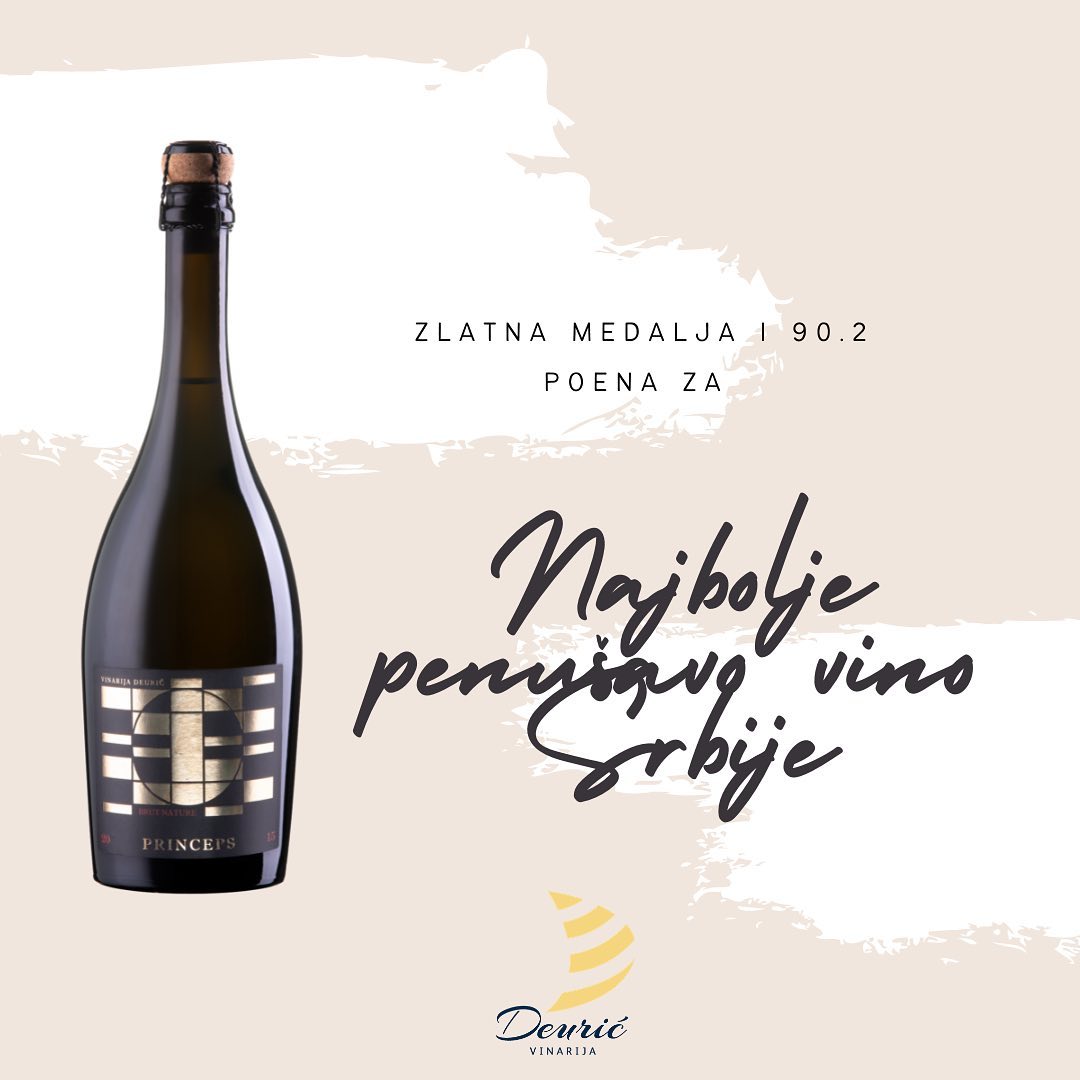
TAMJANIKA 2019 - LASTAR WINERY (Grand Trophy for White Wine made from Aromatic Grape variety)
We shall move on my second wine. Next, we have a wine from winemaker Lastar. It's Tamjanika. It's 2019. Interesting grape. I think lots of people in Serbia and your neighbours like to claim that it's your local grape variety and it kind of is and it kind of isn't. Genetically, it's a Muscat a petits grains, but that doesn't mean to say that it hasn't been local. It probably arrived in this part of Europe with the ancient Greeks more than 2000 years ago, so there's been lots of opportunity for it to be selected and to become a local selection. So, it's kind of international but also local. So, I think these aromatic grapes like Tamjanika are actually quite popular in CEE. In a way, they're not really in the UK, which I think is a terrible shame because they're incredibly versatile with a lot of food that we love over here. We don't have hugely complex food culture of our own, it tend to be stews and pies and fish & chips. We've actually got incredibly diverse culture brought by immigrants, waves of them who have come to the UK and made us such a, well, I used to think, such a cosmopolitan country. You can have food from anywhere in the UK. I'm not sure if there's a Serbian restaurant, but I bet there is somewhere if I look. But anyway, we enjoy, we have a lot of Asian cuisine, Chinese, Thai, Vietnamese, Indian, Pakistani, Bangladeshi, and all those cuisines are actually fantastic with these slightly more aromatic grape varieties. So, I do think it's a shame that people over here tend to like their white wines a bit more neutral, but anyway... onto the wine itself. So, the wine region here, we're in Tri Morave, Levač. 100% Tamjanika. I am not quite sure when the winery was first founded, but anyway, this vineyard's 10 years old. And I know that the owner just had fond childhood memories of wine, and wanted to do something to kind of recover the history and the culture of his country. So, the first plot was planted 10 years before the first wine was made. Again, I think it's relatively new winery. This particular vineyard benefits from 3 different winds, from different mountains near the vineyard. It's in a kind of natural amphitheatre as well. It's cooler and fresher than Župa region. You've got sand and clay and limestone in the vineyards. And I talked about altitude with the first wine. Again, altitude's a factor here. 330 meters and altitude makes a difference because you drop I think a degree Centigrade for every hundred feet. It's nearly 3 feet in a meter, so by the time you know, you've got up to 330 meters, you're losing quite a few degrees in terms of temperature, especially again at night. So, that's really, really important for keeping freshness. And freshness in these Muscat varieties is really important for balance because you've got these lovely aromas but you need freshness because if there's an issue with Muscat, it's that they can be a little bit heavy and then a little bit phenolic. And there isn't any of that here. I've got these really nice white flowers, grapey, muscaty, elderflower, inviting, clean, floral, summery-aroundness. Then, another thing I like about this wine is that they've obviously picked it quite early or maybe it's the cool vineyards, but it's 12 percent alcohol and Ph is 3.3, so you've got that freshness, you've got delicacy to it, you haven't got any of the bitterness Muscat can get with higher alcohol levels. It's just really nice purity and freshness on the palate. There's nothing very complicated about winemaking here, selected yeasts, stainless steel, and that's actually all it needs. If you've got an aromatic grape like this, you need to pick it in good condition, you need to pick it healthy and you need to sort of vinify it directly, cleanly and just let what comes from the vineyard show through in the glass. All wines I've seen from this winery have a real rafinement in terms of the winemaking, you know, very precise, very accurate, very super clean winemaking. The beauty of clean winemaking and modern equipment is that it really does showcase what you get from the vineyards. You know, maybe we'll come on discussing the impact of modern winemaking and natural winemaking and skin contact later on among these wines, but here we've just got something to say, again, this for me would make a really nice aperitif, pretty summery, sitting on the terrace on a sunny day...Not sunny day here unfortunately, but...or I say with these Asian inspired cuisines, particularly, and I think it would go with things like, I'll tell you what works really well for me with Muscat grapes, is asparagus. And asparagus is pain to match with wine, you know it clashes with so many things, but actually I think this would work really well with this wine. So, there's some thoughts.... Again, you know, I am not a sommelier, I am sure some of you in the audience are sommeliers and might have your own thoughts about how you would pair wines like this, but...
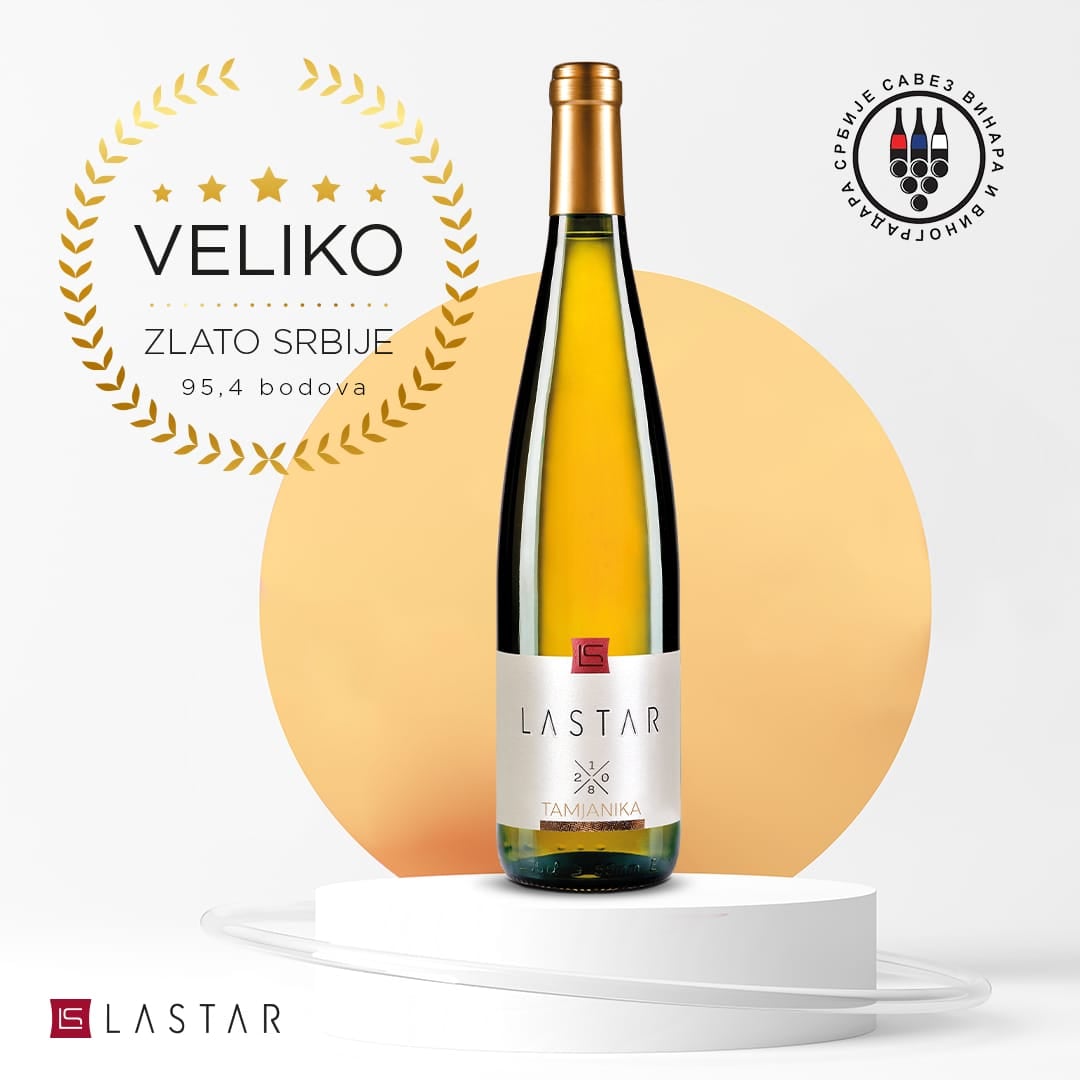
VISTA HILL RESERVE WHITE 2012 - VISTA HILL WINERY (Grand Trophy - The Best White Wine made from Local Grape Variety)
So, that's two very nice, very different wines from two different young, small wineries. Now, we're going to have a look at the story of Grašac, Graševina, Italian Riesling, Riesling Italico, Riesling Vlašsky, Olasz Riesling, whatever you want to call it, this poor grape is so important in CEE. You know, it's the most planted grape in Serbia, the most planted grape in Croatia, probably the most planted grape in Slovenia as well, and it's out there, it's number 3 in Hungary, you know. So, it's a really important grape in all these countries. And yet, it has suffered from a really quite chequered history, certainly in terms of its reputation, and to some extent for a good reason. The wine is Vista Hills Grašac Reserve from 2012 and this one won the trophy for local non-aromatic white grape variety. And it also did quite well at Decanter last year. It picked up a good silver medal with about 92-93 points if I remember correctly, and I was on the panel that judged it, so I can comment from that point of view as well. The grape itself, you know, I mean, I suppose it's history, I first came across this buying Ljutomerski Laški Rizling in the late 1980s-early 1990s, when it was a workhorse grape, you know, big yields, fairly neutral white wine in vast quantities, made with some residual sugar, incredibly popular certainly in the UK back then. And I think it suffered a lot in terms of its reputation for being this workhorse grape, being the entry-level wine, one that is used to make spritzer with, so you can't really taste wine, nobody's paid any attention to the vineyards, nobody's paid attention to the quality of harvest, so what you'd do about that. Maybe one of the things you do is change its name. And hence this move towards calling it Grašac, rather than Riesling Italico or any of its other names. And again, I think in Croatia as well, there's been a lot of emphasis on Graševina story. You know, we helped by Jancis identifying its likely origin as possibly Croatia, but certainly it's a Balkan grape. I don't think anybody quite knows where it comes from exactly, but it's a Balkan grape, so let's call it a local grape. Grašac is a name to give it a new identity and to reflect that hopefully people who are calling it Grašac are the ones who are paying attention to its potential. And it does actually have a lot of potential. And it comes down to again, as is the story when we get on to Prokupac, or I could also tell story about other local grapes in the region as well... It's about vineyards, it's about lowering yields and it's about paying attention to winemaking. This was a winery that I was a bit frustrated about because their website actually is useless, it doesn't tell anything, it doesn't tell their story. I messaged them and e-mailed them and got no response, so it is quite frustrating that I can not tell their story. All I can tell you about is what I have got in the glass and a little bit of information that Igor kindly managed to get for me. So, 2012 vintage, and it's still this beautiful glowing pale golden straw colour. Really bright and vivid. Really attractive in the glass. And you've got this lovely complex nose, kind of lemon peel, candied peel, honey, chamomile, there's a kind of herbal quality to it, very inviting on the nose. Then it's got this really nice texture and richness in the mouth, it's a broad wine, it's got this real textural quality, quite rounded. Again, following through with those lemon, lemon peel, herbal qualities. There's a nice juicy freshness to it, like lime juice freshness on the back. And just a tiny, tiny hint of bitterness which actually I quite like here. I think people get a bit frightened of bitterness, but because this is already quite an old wine and the acids are softening, that bitterness actually adds a really nice dimension and balance to it that stop it being tired and overdeveloped. So, I think there's a really nice sort of almost sweet-bitter kind of balance going on here which I find really attractive. This is a nine year old wine from a grape that nobody has much time for. This is very much still a wine that is in lovely condition. It's drinking beautifully now, I probably wouldn't keep it for too much longer, you know, it's not going to fall apart in the next year or two, but I wouldn't put it away for another ten years. There's real depth and complexity here, which is fabulous. Little bit about the place and winemaking. So, 220 meters, it's slightly at lower altitude but still enough for that cool night thing. South facing, and it's from a 50 year old vineyard. So, when I was talking earlier about this new wave of wineries and new vineyards, you know, there are also these old vineyards that have this natural balance and real natural intensity to the fruit. And I think it shows in this wine beautifully. And the winemaking, again, if your fruit is good enough, you don't need to mock about with the winemaking. So, this was basically selected yeast and it was 6 months in stainless steel. What I don't actually know is whether they intended to keep, you know, for this wine to be laid down for so many years when they made it. And it looks like this is a really fantastic corner of Europe for this grape variety, because it's literally just over the border from Ilok and Principovac, which I visited actually just before lockdown, it was my last visit before we got banned from travelling. I was to go to Ilok, on the other side of the border and actually see what a fantastic place it is for Graševina and on your side of the border Grašac. And I think the Danube there, you know, it's quite continental, you're long way inland, but the altitude, the rolling hills, the breezes and I think the Danube, the big bodies of water are always good at modifying the climate and just taking the extremes of climate in both directions. So, I would like to tell you the story of the winery, but actually I can't, so we'll just go on enjoying the wine. One thing we might talk about later on, these 2 wines, both are dry wines but they're in these dark flute bottles, which maybe works for the Serbian market, but I have to say for the UK market, that is not a good bottle shape for dry wines. It's been so deeply engraved in our market that sweeter wines come in these flute bottles, that it's actually quite hard to overcome. Which is a shame, because what you are actually about is the wine and not the shape of the bottle. And I actually put that in a Furmint glass rather than a standard wine glass, which works really well I think. In terms of food matching, with just a hint of residual sugar, it's just 6.5 grams, it means it can take some fairly full bodied food, some of the richer fishes would be quite nice here, pike, perch, zander, that sort of thing would be really good, and some lighter game birds, guinea fowl, pheasant and so on. And for the vegetarian types, I think aubergine would be a really nice match.
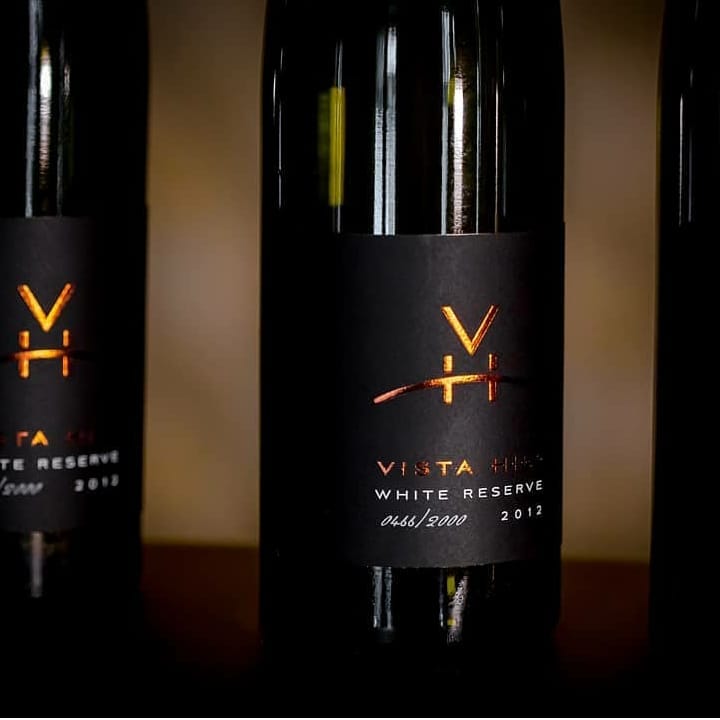
CHARDONNAY 2018 - VINUM (Grand Trophy - The Best White Wine made from International Grape Variety)
So, next stop, we have got the winner of the international whites trophy, which is a winery called Vinum. It is Chardonnay 2018. I think there's often a debate in the wine trade as to whether a country like Serbia needs to major on its international grape varieties or its local grape varieties. And actually, personally I think there is a role for both. Because, the thing about international varieties, the downside is you're always, always gonna get compared to original role model. So, if you're making Chardonnay, people will always compare you to Burgundy. It's a fact of life. On the other hand, if you can show that your terroir is capable of making really good Chardonnay, people have somewhere to benchmark it because everybody knows what to expect from very good Chardonnay. So, if Serbia can make very good Chardonnay, then ours is to tell everybody there's world class vineyards here. And I mean that's certainly something that happened last year in Decanter judging. We gave, there was a Serbian Chardonnay that won a platinum medal because, frankly, it was a beautiful wine and it really stood up and showed that Serbia can make beautiful wines from Chardonnay. Anyway, we're going back to Srem and Fruška Gora. This is from the eastern part. This is owned by a guy who is a doctor and sort of started buying grapes for a bit of a hobby back in 2001 and then started planting his own vineyards in 2007. So, the vineyard for this Chardonney is 11 years old, south facing, very low yield, I don't know what low yield, but very low yield and selected hand harvest. Again, you have this chernozem or black soil, but you also got marl, the high levels of carbonates, which is something that works really well for Chardonnay. And again, an altitude factor here. So, it's between 180 and 210 meters, so again to keep better than coolness. You can see the colour. It's this beautiful glowing lemon yellow, so a really nice colour. And this is a tiny batch, there's only 1.400 bottles of it, quite lucky to get to taste this. A small family cellar, they've got young team working for them, they've got a young and well-educated oenologist, and I think it shows here. This is very classic, but very well-handled winemaking. So, you can definitely smell oak, there's a sweet vanilla character, but it's actually nicely integrated with some nice white peach and yellow plums. It's very clean, it's an inviting nose, it's a proper Chardonnay. On the palate again, it's quite ripe, it's 14 percent alcohol, but there's a nice texture to it, nice roundness, the acidity 6.4 grams, Ph 3.4, so it's kept its freshness nicely. And there's good length and I think the oak, well, it's noticeable and harmonious, really nice oak here. It's whole bunch pressed, fermented in oak, so hence that's why you've got this nice integration of the fruit with those layers of oak character. Selected yeast, malolactic, so that's giving a nice creaminess, that textural quality you get from well-handled malolactic. And interestingly, the oak barrels were 300 liters, not the standard 225s. I'm saying this a lot, as wine producers still want to use oak, but they want to sort of tame down the oak dominance in their wine, so bigger barrels, reduces the surface area of oak, you get this integration. And it was 8 months, and it was American and French oak from Seguin Moreau, you know well-known for high quality barrels. Then it was aged on fine lees for another 10 months in tank before it was bottled. Just a really nice glass of Chardonnay and it's quite fashionable to, and certainly in the UK to not like Chardonnay, but you know, when you have a glass of Chardonnay, you can see why it's a great grape. And it's such a versatile wine with food also.
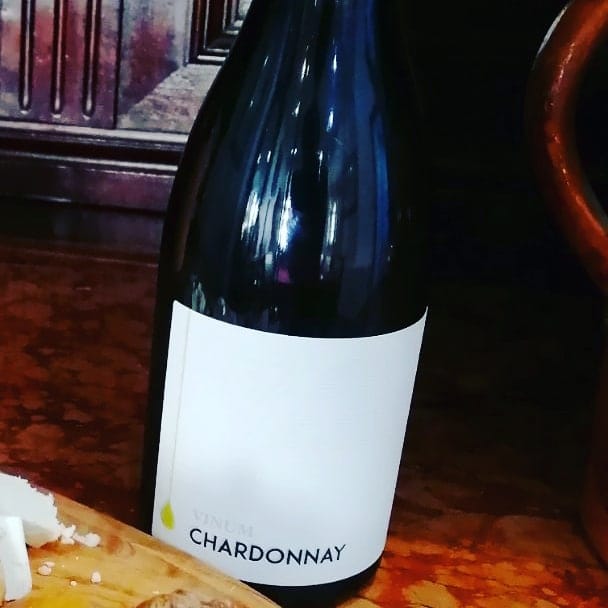
ROSÉ 2020 - KOSOVIĆ WINERY (Grand Trophy - The Best Rosé )
Next stop then. We are going to go pink next. This is Rosé from Kosović. They are a small winery, I understand. Not a huge amount of information available about this winery. I think a traditional small winery. Again, we're in Fruška Gora, in the eastern part. This is Merlot and Cabernet Sauvignon. Alcohol 13.3%. Total acidity according to the winemaker is 7.3 and I think it's really important to rosés as people do tend to want quite lot of freshness. It's quite a salmon toned colour. There's certainly quite a trend towards these incredibly pale, almost white rosés around the world. I think it's a bit of a shame, because sometimes stripping out colour means stripping out flavour. It's quite nice to see this slightly deeper coloured rosé with a little bit of depth to it. Anyway, aromas are some red fruit, some leafiness here, slightly herbal, slightly rhubarb... Do you have rhubarb in Serbia? I hope you do, because it's fantastic fruit-vegetable. It's a stem really, so I suppose it's a vegetable, but we treat it as a fruit. Also, there's a nice freshness to it here, and I think the Cabernet Sauvignon character actually comes through quite strongly on the palate. It's a real kind of black current tea, black current leaf character to it, so real personality and flavour in a rosé here. There's a fresh finish, it's very dry. It's only 2 g of sugar, so it's definitely a very food-friendly rosé, probably not so much one for sipping in the garden on its own, but with food, it could be fantastic. I mean I wonder whether it's a wine that would do well in a sort of international context, but I think it's a nice wine, it's got plenty of character and real varietal expression here and real freshness to it, which I suspect is the thing that attracted the judges for getting it trophy for the rosé category. So, I don't really have any more information about it. Yes, it's a family business, three generations, they have got their own underground cellar and just 7 hectares of vineyards. In a region Sremski Karlovci that has a really strong winemaking tradition and apparently the architecture is quite dramatic, a bit like Villány in Hungary. I think it's somewhere I need to go and visit. So, you know, nice wine, small winery, real personality here, freshness, juiciness and this varietal expression. So, lots to enjoy there.
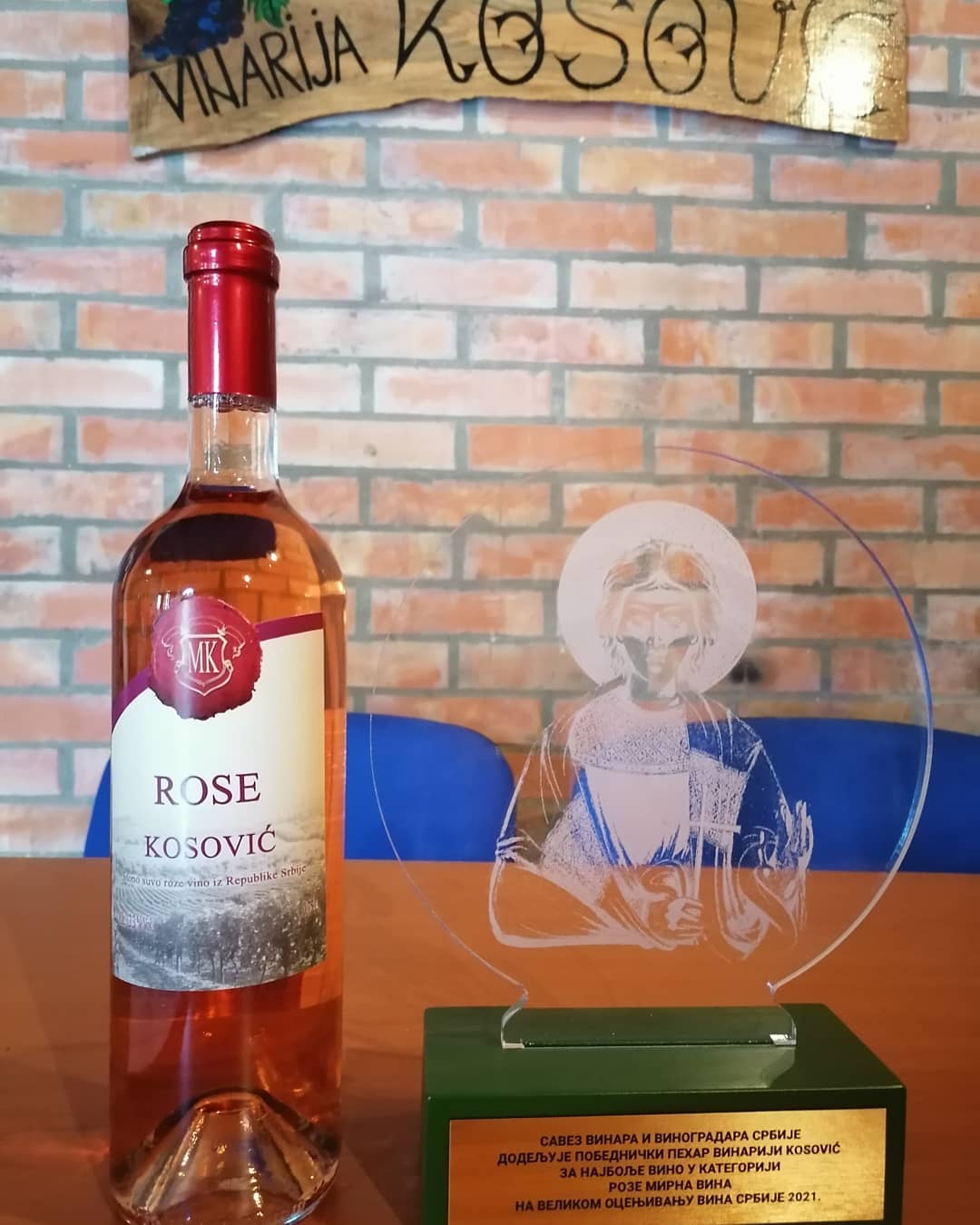
ORANGE 2017 - VUČUREVIĆ (Grand Trophy - The Best Orange Wine)
Next stop, we are going orange. It's slightly tawnier colour than the rose, but it's slightly deeper. The development of orange wines is also an interesting category. So, the name of the winery and the wine. The name of the wine is B, the winery is Vučurević. It is 13% alcohol. It is 2017 vintage. This is an orange wine from Grašac, which again is really an interesting development. I am just racking my brains whether I have tasted orange wines from Grašac before. I must have done, but I don't think it's particularly common. It's an interesting development here. It's 100% Grašac and again from Fruška Gora. So, again this is the kind of , it's really interesting to see these developments, orange, it's kind of recovering tradition but in a modern way. This is 20 year old vineyard and it is managed by organic techniques with no use of pesticides. I think this is quite an important development in the wine industry, you know. For many of us, wine is a luxury and therefore as a luxury, it has a duty to do no harm or to minimize the harm. So, I think moving towards sustainability in whatever directions you can, I think, is actually quite an important trend in the wine business and we certainly see it coming. Everywhere you look through, people are moving towards organic, towards reducing their carbon footprint, to more sustainable packaging, to more recyclebility, to solar panels, to recycling winery waste water, you name it, all these things are happening because people want to reduce their carbon footprint, young drinkers are particularly interested in these things. So, organics, I think, is a part of that. So, twenty year old vineyard, organic, sandy clay, 130 meters, so this is the lowest of the vineyards we're looking at so far, and this is wild yeast, spontaneous fermentation in amphora, and again, this is really interesting kind of new phase of tradition really, using clay for winemaking, for fermentation because you get this kind of micro-oxigenation without flavours that you tend to get with using oak barrels. So, it replicates some of that very tiny, very gradual exposure to oxygen but in clay which is in kind of many ways more neutral material. 6 months in amphora, and then it has a year of ageing in oak barrels, where it's racked every 3 months. What I don't know is what sort of oak barrels they are, or what sort of size, whether they are older or neutral oak barrels or not. I suspect they are because I am not smelling new oak here. So, I'm getting dried fruit, dried apricots, I'm getting sultanas, nutty dates, walnuts, green fig kind of character here. So, there's a lot going on here, lots of complexity. What I'm not particularly getting is Grašac character. I should have mentioned earlier about winemaking. It's one of the things about modern winemaking (this sort of quick stainless steel cool fermentation winemaking) is that it's very neutral and it allows the grape to express itself. What you definitely get here is a lot of influence from the winemaking character. Obviously, the grape is a part of it, but I would say the winemaking approach, long skin contact, I don't actually know how long the skin contact was, but it's usually longer for orange wines. Certainly, in South Africa where they defined it is 10 days minimum on skins and it has to be while fermentation is happening. So, the skin contact for orange wines is different to say, pre-fermentation skin contact because while the fermentation is going on, the temperature is rising and you extract more from the skins, more structure, more phenolics and so on. So, anyway, lots of complexity and depth on the nose. And on the palate, again this kind of savory, almost saline, salty kind of character, quite savory, dried apricots, but also not terribly fruity, but it's structural and it's kind of quite sappy and appetizing because of that structural quality. Then again, I think these are food wines par excellence. They can go with so many different things, you know, cause you can have them with sort of heartier meat-based dishes, I think smoked fish would be fantastic, grilled aubergine, mushrooms, these kinds of savory umamis, vegetarian things as well...so lots of things you can do with these wines, but they're definitely not everybody's taste and you have to put them in the right context. They're kind of intellectual wines that need thinking about and enjoying in context more than anything. But, you know, it's really interesting. It's got that orange character, but it's not too harsh. Sometimes, I find orange wines are a bit extreme, a bit volatile and a bit too tannic, but actually this treads a nice balance. So, that won the trophy for amber wines.
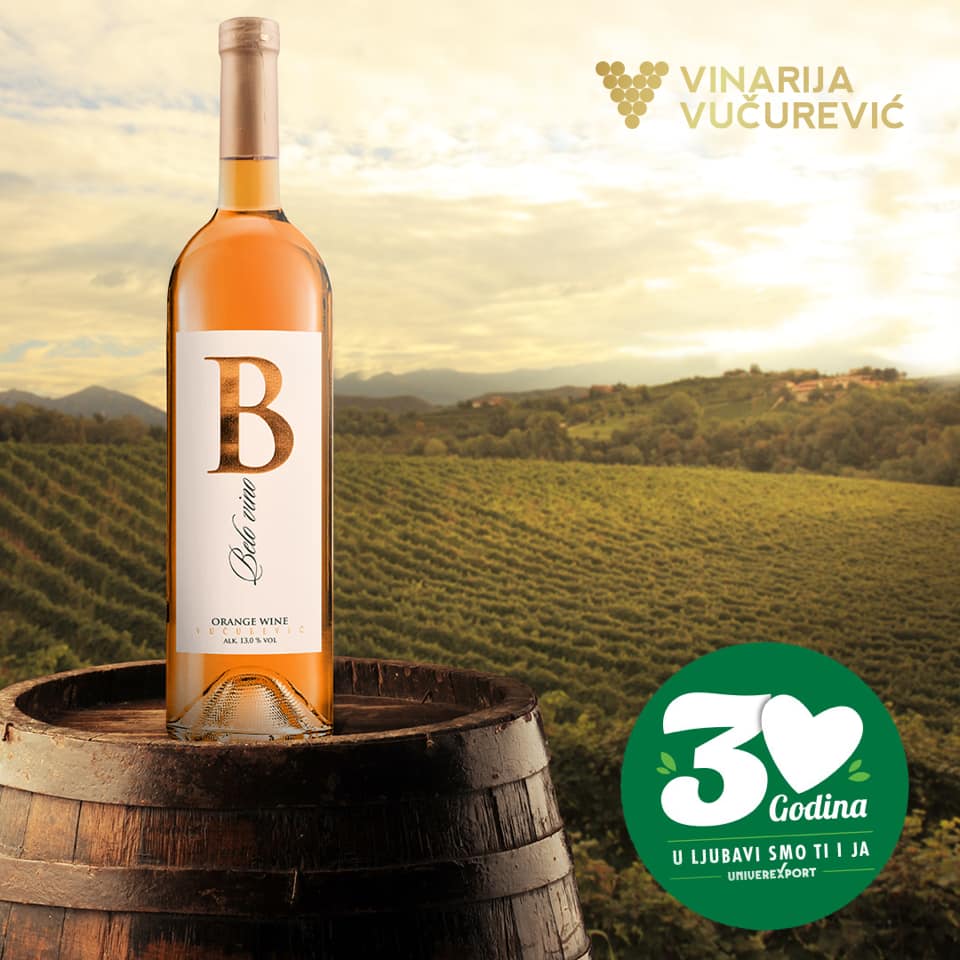
PRINCE RSKAVAC 2017 - BRAĆA RAJKOVIĆ (Grand Trophy - The Best Red Wine from Local Grape Variety)
We're gonna switch colours now. We're going Prokupac now, from a small winery called Rajković Brothers. This won the trophy for the local red. Now, this family has been making wine for centuries. They were first on the local census in 1834 but also think that the family has been making wine for a lot longer than that. So, again, this is an interesting one. Prokupac became a bit of an ugly duckling in the previous era because it really is capable of producing really high yields and in that case, fairly low quality of wine. But, like several of the other Central European grapes, with the right attention to detail, lower yields, old vines, et cetera, you can make some really fantastic things out of it. This is from a vineyard that's 80-100 years old. You've got that natural depth and balance. And actually, I guess it pre-dates Yugoslavia even. 320 meters, sand, clay and limestone. Spontaneous fermentation, we're in Župa here, in Tri Morave region. And they're very proud of their granddad's wine being praised by King Alexander I in 1933. Father actually studied viticulture and planted his first vineyard when he graduated. So, it's kind of first modern vineyard in Župa back in 1962, a kind of modern vineyard but based on very old tradition. Anyway, the thing about Prokupac, I think is this. It's not deep coloured, and I think there's a cultural thing in CEE about deep colour being associated with quality. It's time to move away from that, you know. You can have fantastic quality and I know a lot of people struggle to sell their Pinot Noir in Eastern Europe because you can see through it. Anyway, you can definitely see through this wine. It's quite pale, it's gentle, sort of pinkish, lightish red, but actually for customers like us that love Pinot Noir, some of these central European grapes are fantastic: kadarka (gamza), kekfrankos (blaufrankisch), prokupac and I also think Blatina in Bosnia-Herzegovina can fit this mold of wine that give real elegance, and that's one of the things that impress me about this wine. It's actually the sheer elegance and length to it. Nice fragrance, some clove, some violet, raspberry fruit, dried cherries kind of character. On the palate, there's a bit of tannin grip, but that's fine. The acids are quite gentle. The thing where I think the old vines really show is this fantastic length here. I really like that fruit intensity, but I like the length and that there's real elegance here. Again, I would love to see that with wild mushrooms, for the meat eaters among you, with some pork dishes, duck, that kind of thing would also be good.Yeah, I can still taste the fruit flavor is really lasting in the mouth. You know, culturally, sort of changing people's ideas , quality red just doesn't have to be big and inky and dark and big tannins. It's 14% alcohol, so it's quite ripe, but the Ph is 3.5 so it carries it quite well. Spontaneous wild yeast fermentation, 12 months partly in barriques, partly in 500 l barrels. I don't know whether they're Serbian oak, but I suspect so, because I do associate that hint of cloves and spice with Serbian oak. Really interesting wine, you know, and I am really interested in development of Prokupac as a flagship for the country.
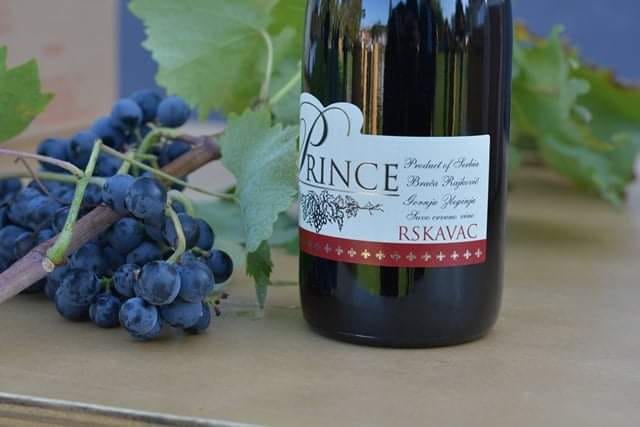
MERLOT 2015 - VINIS (Grand Trophy - The Best Red Wine from International Grape Variety)
And then, same question with international and local grapes. We have one of each here. We just had the trophy for the local grape, and now the trophy for international grape. It is a Merlot. And again the same story really applies. So, this is Vinis Merlot from Vinis winery and it is 2015 vintage. The same story applies, can you show that your terroir can do great things with international grape varieties? And actually, I really like that side of the Balkans for Merlots. There are fantastic Merlots in western Slovenia, down through Croatia and Istria, and you know, some really good Bordeaux grape varieties I've come across over the years in Serbia too. Again, what I thought was interesting about this is again, it's not inky dark. It's quite transparent. So, the bottle says it's 100% Merlot. It's 13.5% alcohol. It's actually really nice to see, because I hate Merlot when it gets too overripe and alcoholic. And I think this 13.5% alcohol with good acidity, and I think Ph was about 3.3 or 3.4, which means the wine keeps its freshness. I really hate Merlot that isn't fresh because it loses all personality. This is 2015 wine, and it's actually really youthful. It's kept really well. It's black fruit, brambly blackberry fruit, there's some kind of forest floor, a little bit of ageing and complexity, a little bit of oak character to it. But it's still in pretty good shape for a wine of its age, which I suspect is something that the judges found appealing. And this is another one where the winery was really... the website is really not helpful. Again, you have to experience this winery through the wine itself. Tri Morave, Jagodina area, apparently the village name Dobra Voda means Good Water. Own vineyards, what I like about this wine is that it's nicely elegant, quite restrained, it's kept really well, I think 2 years in Serbian oak was part of winemaking here. That oak is integrated really well with fruit and carries it really well. Again, Serbia showing it can do local varieties and it can do international ones.
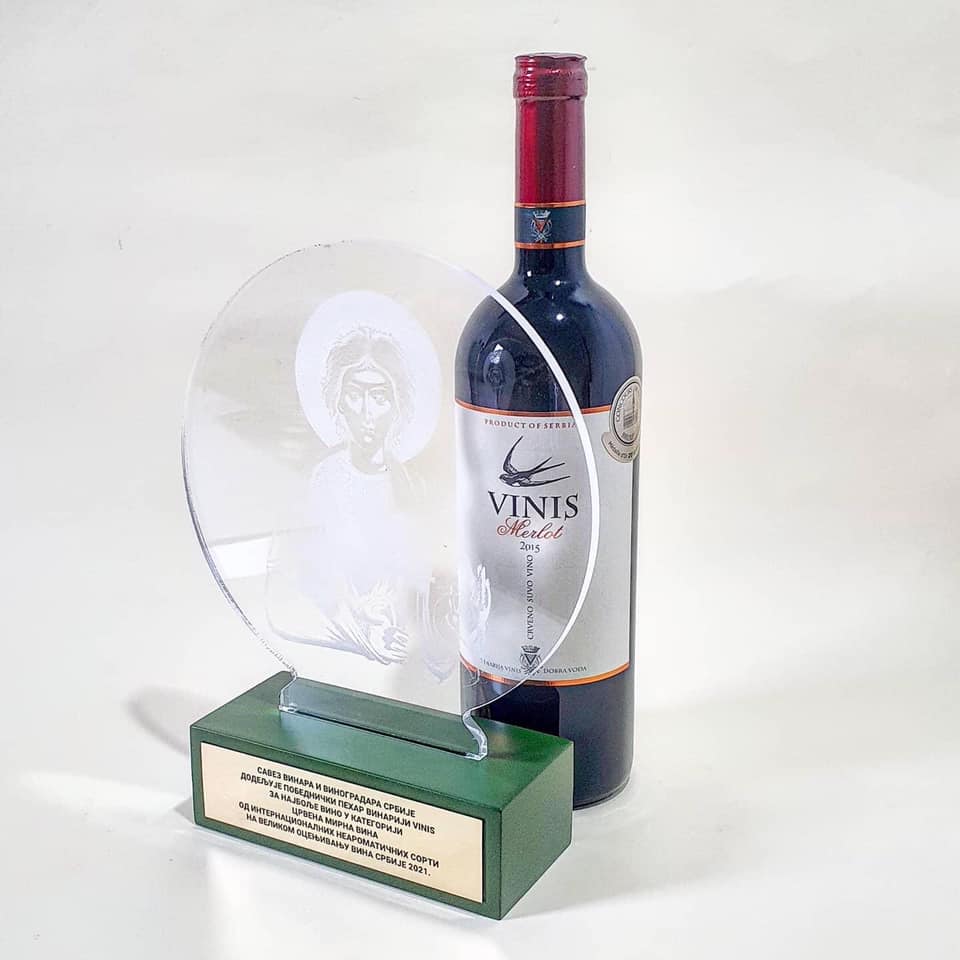
TRIJUMF LATE HARVEST 2013 - ALEKSANDROVIĆ (Grand Trophy - The Best Naturally Sweet Wine)
So, one more wine to share with you. OK, so, a winery that I think everybody in Serbia knows. Aleksandrović and this is Trijumf, the late harvest traminac. These guys have been pioneers in the new scene of quality wines in Serbia in so many ways. I know their names. Over the years, I have tasted quite a lot of their wines. They make fantastic wines. I haven't tasted this one before, so again really interested to taste this. It's got this lovely, sort of vivid old gold, almost touching on amber. It's 2013 vintage. We're in Šumadija here, in Oplenac. Obviously, historically very famous, I am sure you all know the story of this winery and the royal recipe. But let's concentrate on this wine. It's Gewurztraminer from 12 year old vines, this is, actually plant material came from Italy, and it's late harvest. So, it's picked right at the end of October into early November, no mention of noble rot, I think it's just picked very late. Cold maceration for 8 days at 2 degrees. Important to point that in order to get the aromatics and the flavors from the skins without fermentation happening, one of the problems of these grapes made sweet is that it can get quite volatile. So, they make grapes nice and cool, get those flavors, then stainless steel fermentation, inoculation with selected yeast and then stop ferment when they felt the balance was right by dropping temperature and sulphiting. And ultimately it does get filtered before it gets bottled. And it's aged for about 8 months on sediment. So, there is this lovely, inviting, sort of tropical, spicy, floral, mango, so much going on the nose here, 'cause you have this interesting grape variety with loads of personality, the rose petals, Turkish delights sort of character. And you've got age as well, but it aged really nicely. You've got this lovely sweet-acidity balance. It's 145 grams of sugar, total acidity 8.2 and Ph 3.2. Again, keeping acidity in Gewurztraminer is actually quite challenging. So, I think that the right vineyard site and altitude again, 285 meters, come into play cause the beauty of good sweet wines is that interplay of sweetness and acidity. You've got to have both, otherwise sweetness is cloying and it's not here at all. You've got lovely depth of flavors, and it leaves them out so fresh and clean.
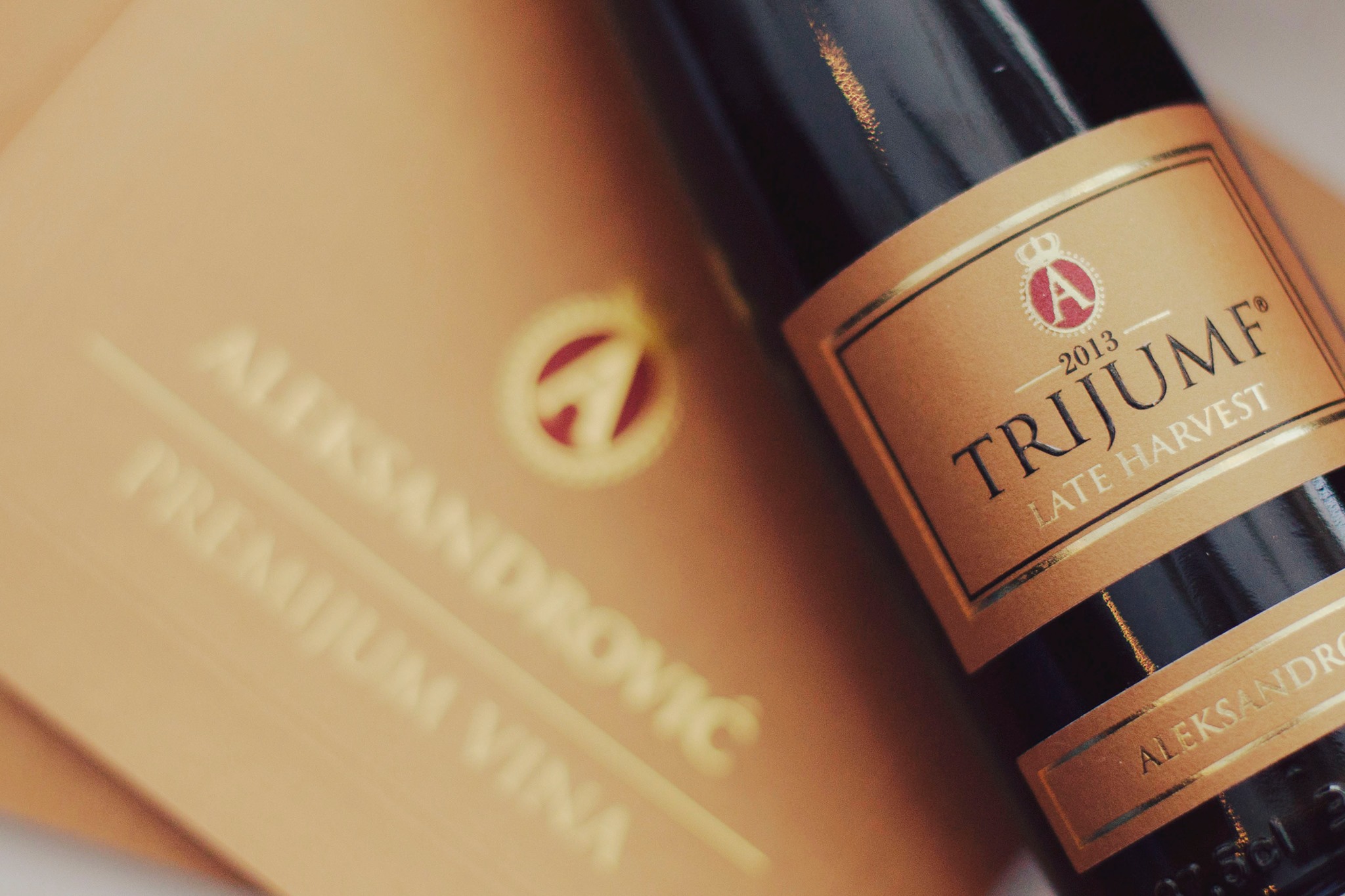
So, incredible diversity of wines here from Serbia; local grape varieties, international grape varieties. It's a real privilege for me to see these wines. I think there's a really good story evolving that it would be great to see more Serbian drinkers enjoying more of these individual interesting wines. And maybe exports too, but that's another question to develop."

Tomislav Ivanović
Awarded wine writer, wine critic and contributor to selected wine magazines. WSET3-certified author and editor-in-chief of www.vinopedia.rs. Member of Vojvodina Sommelier Association. Juror in national and international wine competitions. Lecturing about wines of Serbia and the Balkans. Local partner of Wine Mosaic organization. Co-founder of International Prokupac Day.

Pročitajte i druge članke iz ove rubrike:
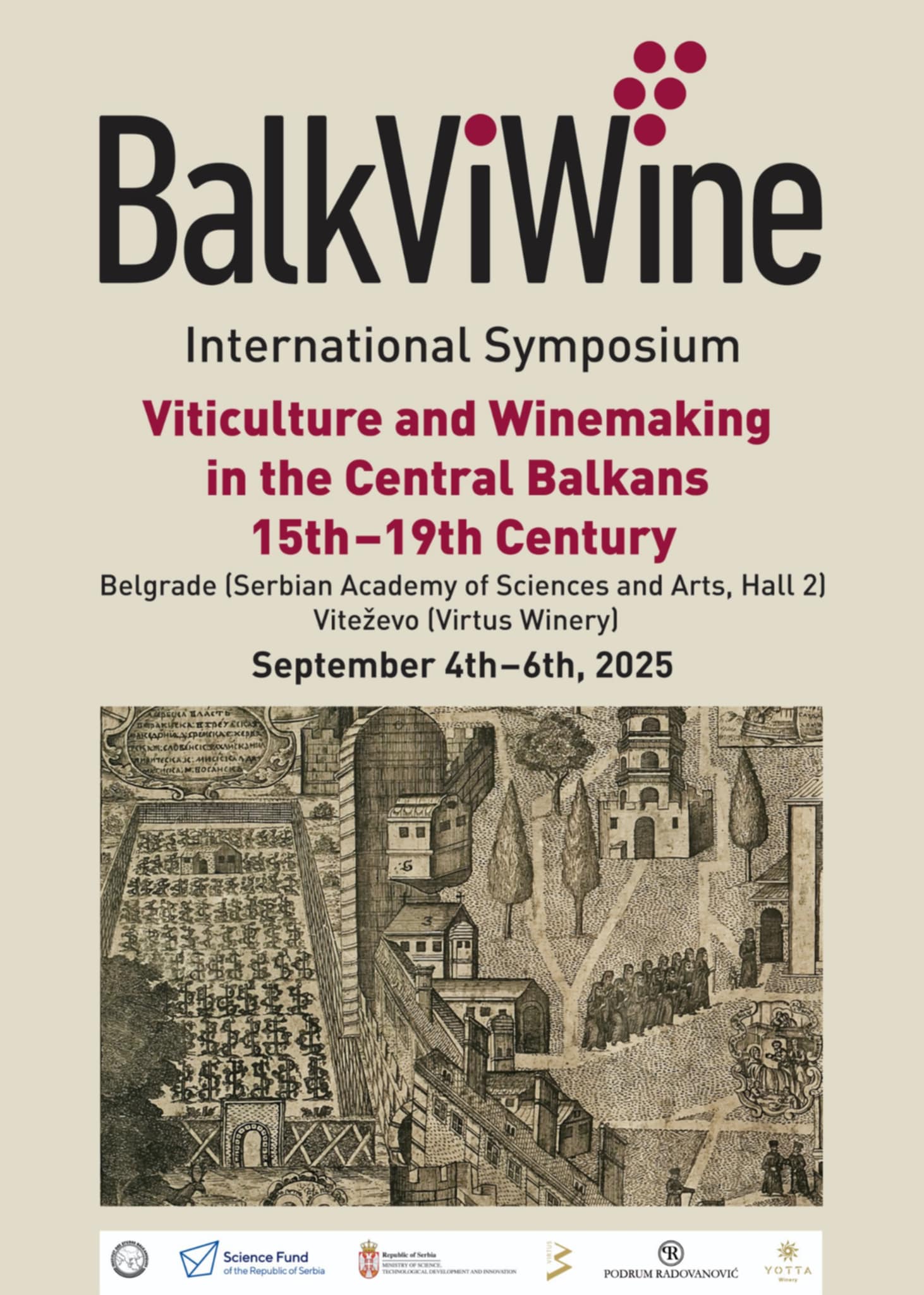

BALKVIWINE 2025 BEOGRAD
PROČITAJ VIŠE
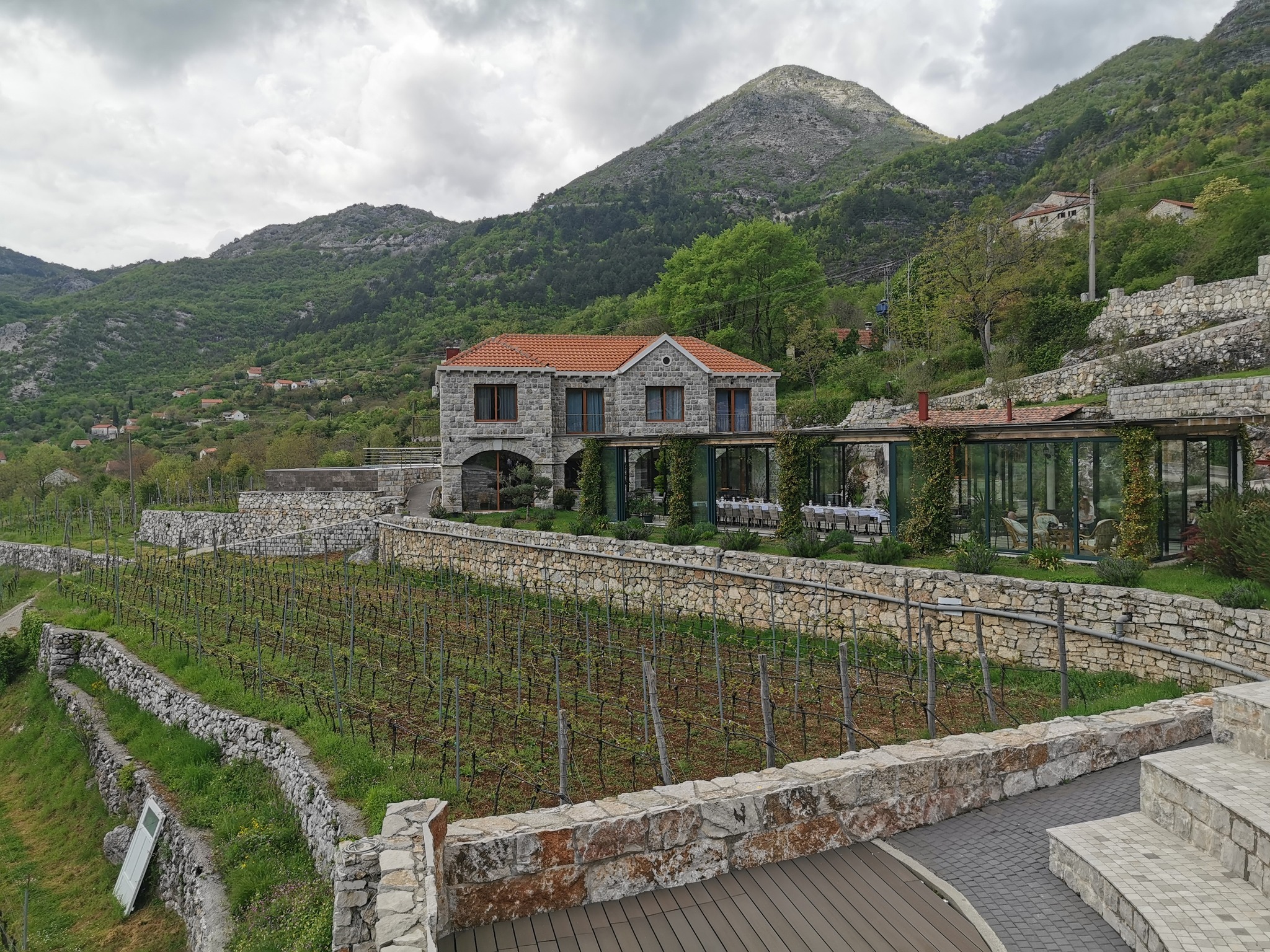

KRATOŠIJA PROBUDILA CRNOGORSKE VINARE
PROČITAJ VIŠE
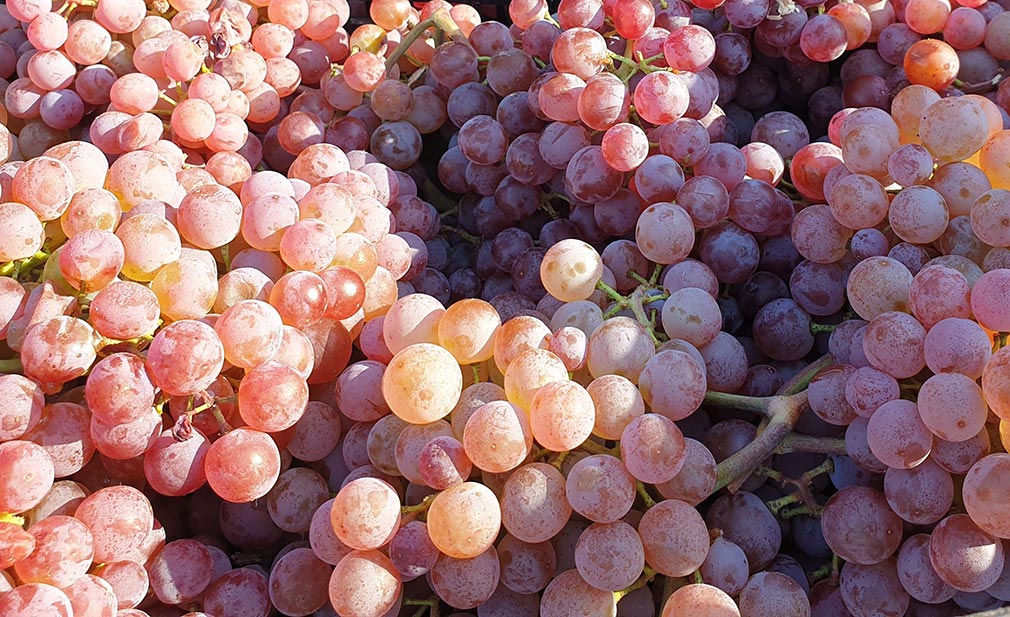

VINOPEDIA TOP 10 2024
PROČITAJ VIŠE
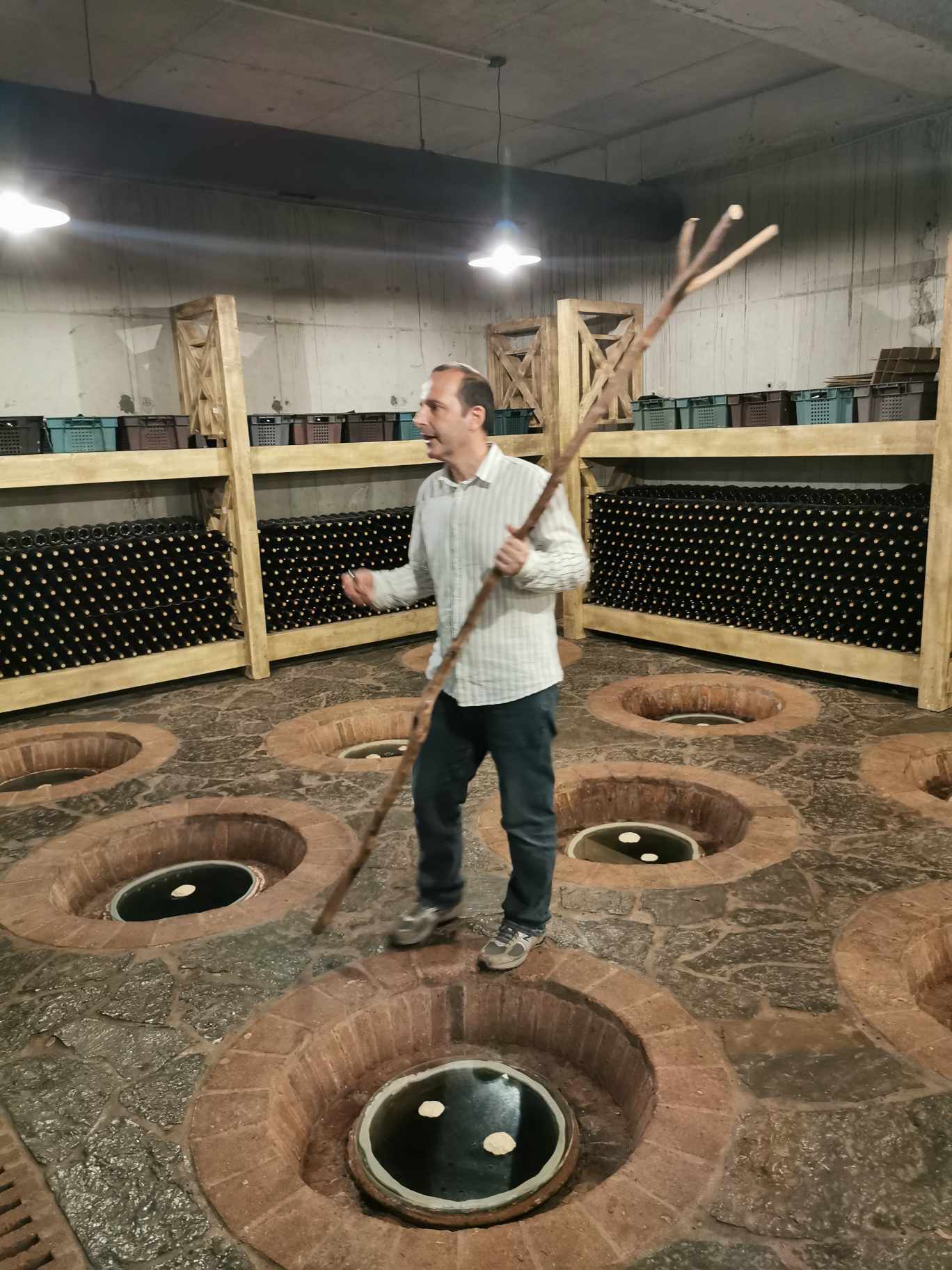

GIUAANI - VINSKI TURIZAM NA GRUZIJSKI NAČIN
PROČITAJ VIŠE


SPASIMO STARE VINOGRADE SRBIJE
PROČITAJ VIŠE
Winner MILLESIMA BLOG AWARD 2016

Pobednik MILLESIMA BLOG AWARD 2016
VINO & FINO wine personality of the year 2016

VINO & FINO vinska ličnost godine 2016